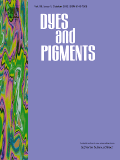
DYES AND PIGMENTS
Scope & Guideline
Advancing Knowledge in Dyes and Pigments for a Brighter Future.
Introduction
Aims and Scopes
- Dye Synthesis and Characterization:
Research articles often detail novel synthetic routes for dyes and pigments, including modifications to enhance their optical properties, stability, and solubility. Characterization studies using spectroscopy, microscopy, and computational methods are also prevalent. - Photophysical Properties:
The journal emphasizes studies on the photophysical behaviors of dyes, including their absorption, emission, and quantum yield properties. This includes investigations into mechanisms such as aggregation-induced emission (AIE) and excited-state intramolecular proton transfer (ESIPT). - Applications in Phototherapy and Bioimaging:
Many publications focus on the application of fluorescent probes and photosensitizers in biological systems for imaging, sensing, and therapeutic purposes, particularly in cancer treatment and diagnostics. - Environmental Impact and Sustainability:
Research addressing the environmental impact of dyes and pigments, including biodegradable alternatives and sustainable dyeing processes, is increasingly prominent, reflecting a shift towards eco-friendliness in the industry. - Organic Electronics and Solar Cells:
The journal covers advancements in the use of dyes and pigments in organic photovoltaic devices, including dye-sensitized solar cells (DSSCs) and organic light-emitting diodes (OLEDs), highlighting the role of molecular design in enhancing device performance.
Trending and Emerging
- Aggregation-Induced Emission (AIE):
A significant increase in research focusing on AIE-active compounds indicates a growing interest in materials that exhibit enhanced fluorescence in aggregated states, which has applications in bioimaging and sensing. - Near-Infrared (NIR) Fluorescent Probes:
There is a notable trend towards developing NIR fluorescent probes for biological applications, particularly for imaging and detecting reactive oxygen species in living systems, due to their reduced background interference. - Sustainable and Eco-Friendly Dyes:
Research on sustainable dyeing processes and environmentally friendly dyes is on the rise, reflecting a broader societal shift towards sustainability in chemical manufacturing and textile production. - Dual-Functionality in Probes:
Emerging studies are increasingly focusing on dual-functional probes that can serve multiple roles, such as sensing and therapeutic applications, enhancing their utility in complex biological environments. - Machine Learning and Computational Studies:
The application of machine learning techniques for predicting dye properties and optimizing dye structures is gaining momentum, indicating a trend towards integrating computational methods with experimental research.
Declining or Waning
- Traditional Textile Dyeing Techniques:
Research centered on conventional dyeing processes has diminished, with a noticeable shift towards more sustainable and eco-friendly methods, as well as a greater emphasis on the development of functional dyes. - Heavy Metal-Based Dyes:
There is a decreasing trend in studies focusing on heavy metal-based dyes, such as those containing cadmium or lead, likely due to increasing regulatory pressures and a shift towards safer, non-toxic alternatives. - Azo Dyes and Their Applications:
Research on traditional azo dyes is less frequent, as there is a growing interest in exploring new classes of dyes that provide enhanced performance and reduced environmental impact. - Inorganic Pigments:
While inorganic pigments remain relevant, the focus on synthetic organic dyes and their multifunctional applications has overshadowed the number of publications related to inorganic pigment chemistry.
Similar Journals
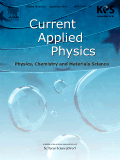
CURRENT APPLIED PHYSICS
Fostering Interdisciplinary Insights in Physical Sciences.Current Applied Physics is a leading journal published by Elsevier, specializing in the dynamic fields of Physics and Materials Science. With an ISSN of 1567-1739 and an E-ISSN of 1878-1675, this journal focuses on the latest advancements and applications of physics principles in various practical domains. Operating from the innovative hub of Amsterdam, Netherlands, Current Applied Physics occupies a significant niche in the scientific community, evidenced by its Q2 ranking in both the Physics and Astronomy and Materials Science categories for the year 2023, along with impressive Scopus rankings that highlight its relevance in the fields of General Physics and General Materials Science. The journal's scope encompasses a wide range of topics, fostering interdisciplinary collaboration and facilitating the exchange of knowledge among researchers, professionals, and students. Each issue features peer-reviewed articles that contribute to the understanding and application of physical sciences, making it an essential resource for those aiming to stay at the forefront of research and innovation in applied physics.

CHINESE JOURNAL OF ORGANIC CHEMISTRY
Elevating Research Standards in Organic ChemistryThe Chinese Journal of Organic Chemistry, published by Science Press, serves as a pivotal platform for advancing the field of organic chemistry since its inception in 1996. With an ISSN of 0253-2786, this esteemed journal provides robust scientific contributions, reflecting significant advancements and novel findings that are crucial to the organic chemistry community. As of 2023, it is categorized in the Q3 quartile of organic chemistry journals, positioning it within the competitive landscape of this vibrant research area, ranking #147 out of 211 in Scopus, corresponding to a 30th percentile ranking. The journal is committed to fostering a scholarly exchange of ideas and research, making it an essential resource for researchers, professionals, and students dedicated to exploring the complexities and applications of organic compounds. The Chinese Journal of Organic Chemistry continues to support the dissemination of high-quality research that contributes to both local and global scientific endeavors.
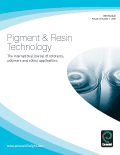
Pigment & Resin Technology
Exploring the Intersection of Pigments and ResinsPigment & Resin Technology is an esteemed journal published by Emerald Group Publishing Ltd, focusing on the interdisciplinary fields of materials chemistry and coatings science. With a history spanning from 1972 to 2024, the journal serves as a vital platform for disseminating innovative research and developments concerning pigments, resins, and related materials technologies. Holding a respectable position in the Q3 category for both Materials Chemistry and Surfaces, Coatings, and Films as of 2023, it ranks within the 40th percentile among its peers, underscoring its relevance and impact within these domains. Although it does not currently offer open access, the journal remains a key resource for researchers, professionals, and students aiming to stay abreast of cutting-edge findings and practical applications in materials science. As such, Pigment & Resin Technology is essential reading for those engaged in the innovation and application of advanced materials in various industries.
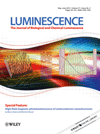
LUMINESCENCE
Shining a Light on Innovative Scientific DiscoveriesLUMINESCENCE is a premier international journal published by WILEY, dedicated to advancing the field of luminescence and its applications across various scientific disciplines. With an ISSN of 1522-7235 and an E-ISSN of 1522-7243, this journal plays a pivotal role in disseminating high-quality research from 1997 to 2024. Positioned in the <> Q3 quartile within Biophysics and Q2 in Chemistry (miscellaneous), LUMINESCENCE ranks #37 out of 111 in its chemistry category and #57 out of 152 in biophysics, reflecting its significant impact in these domains. The journal facilitates open access, enabling wide visibility and engagement with groundbreaking research findings. Aimed at researchers, professionals, and students alike, LUMINESCENCE serves as a vital platform for sharing innovative studies and fostering collaboration in luminescence phenomena, thereby enhancing our understanding and utilization of this critical aspect of modern science.

ADVANCED FUNCTIONAL MATERIALS
Advancing Knowledge in Biomaterials and NanotechnologyADVANCED FUNCTIONAL MATERIALS is a leading journal published by WILEY-V C H VERLAG GMBH, prominently recognized in the fields of biomaterials, chemistry, condensed matter physics, and materials science. With an impressive impact factor and a distinguished position in the Q1 quartile across multiple categories including nanoscience and nanotechnology, this journal serves as a vital platform for researchers and professionals committed to innovating in functional materials. Since its inception in 2000, ADVANCED FUNCTIONAL MATERIALS has published high-quality peer-reviewed articles that push the boundaries of materials science, exploring new frontiers in electronic, optical, and magnetic materials. The journal's dedication to open access ensures that its groundbreaking findings are readily available to a global audience, fostering collaboration and knowledge-sharing among scholars and practitioners in the field. For those seeking to stay at the forefront of materials research, ADVANCED FUNCTIONAL MATERIALS is an essential resource.

Chemistry & Chemical Technology
Bridging Theory and Practice in Chemical TechnologyChemistry & Chemical Technology is an esteemed academic journal published by LVIV POLYTECH NATL UNIV, specializing in the interdisciplinary intersections of chemistry and engineering. With its ISSN 1996-4196, this journal has become a significant platform, contributing to advancements and discussions within the fields of Chemical Engineering and Chemistry, as evidenced by its rankings in the 2023 category quartiles, where it is placed in Q3 for both disciplines. The journal aims to disseminate high-quality research articles, studies, and reviews from 2012 to 2024, welcoming contributions from researchers and professionals keen on driving innovation and fostering collaboration in the chemical sciences. As an open-access journal based in Ukraine, it has established a reputation for accessibility, providing comprehensive insights and a global perspective on the latest developments. Engaging with this journal not only enhances your understanding of current trends but also contributes to the global body of knowledge in chemical technology.

Journal of Nanostructures
Exploring the World of Nanostructured MaterialsJournal of Nanostructures, published by UNIV KASHAN PRESS, is an esteemed open-access journal that has been actively disseminating groundbreaking research since 2011. With an ISSN of 2251-7871 and an E-ISSN of 2251-788X, this journal has established itself as a significant platform for the exploration of nanostructured materials across various disciplines, including biomaterials, electronic, optical, and magnetic materials. As a testament to its scholarly impact, the journal has achieved notable rankings in its respective categories, including Q3 status in prominent areas such as Mechanics of Materials and Polymers and Plastics. This makes the Journal of Nanostructures a vital resource for researchers and professionals seeking to advance their understanding and innovation in nanotechnology. Furthermore, the journal's commitment to open accessibility ensures that valuable knowledge reaches a diverse audience, facilitating collaboration and growth in this dynamic field. For researchers eager to contribute, the journal offers a platform to publish impactful findings that can influence both academia and industry.
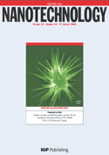
NANOTECHNOLOGY
Connecting Science and Engineering at the Nanoscale.NANOTECHNOLOGY is a premier academic journal published by IOP Publishing Ltd, focusing on cutting-edge advancements in the interdisciplinary field of nanoscience and nanotechnology. With a strong emphasis on research that bridges biology, chemistry, engineering, and materials science, this journal presents high-quality, peer-reviewed articles that cater to the diverse interests of researchers, professionals, and students alike. NANOTECHNOLOGY boasts an impressive ISSN: 0957-4484 and E-ISSN: 1361-6528, and holds a notable position within Scopus, ranked in the second quartile (Q2) across multiple categories including Bioengineering and Mechanical Engineering, underscoring its vital role in advancing the field. The journal's impact is further highlighted by its robust rankings, making it essential reading for those looking to stay at the forefront of nanotechnology research. Commencing in 1990 and with publication extending through to 2024, NANOTECHNOLOGY provides a unique platform for disseminating significant findings and innovative methodologies while fostering collaborations across various scientific disciplines. In a rapidly evolving technological landscape, this journal not only enhances academic discourse but also contributes to the practical applications of nanotechnology in real-world scenarios.

PHOTOCHEMICAL & PHOTOBIOLOGICAL SCIENCES
Unveiling the Secrets of Light-Mediated ReactionsPHOTOCHEMICAL & PHOTOBIOLOGICAL SCIENCES is a distinguished peer-reviewed journal published by SpringerNature, focusing on the rigorous exploration of photochemical and photobiological processes that impact various scientific disciplines. Established in 2002, this journal serves as a vital resource for researchers and professionals in the fields of chemistry, biology, and environmental sciences, addressing fundamental questions as well as practical applications. With an impressive Scopus ranking of #67 out of 189 in the category of Physical and Theoretical Chemistry, it holds a significant position within the academic community, evidenced by its Q2 quartile ranking in 2023. Although it operates under a subscription model, the journal encourages broad engagement from scholars by hosting various articles that contribute to the understanding of light-mediated chemical processes and their relevance to ecological and biological phenomena. The journal’s objectives include fostering innovative research, supporting interdisciplinary collaboration, and disseminating knowledge that drives advancements in both academic and applied sciences. By bridging theoretical insights with practical applications, PHOTOCHEMICAL & PHOTOBIOLOGICAL SCIENCES continues to make substantial contributions to the scientific discourse surrounding photochemistry and photobiology.
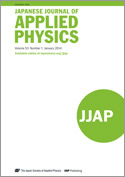
JAPANESE JOURNAL OF APPLIED PHYSICS
Pioneering Research for Practical ApplicationsThe Japanese Journal of Applied Physics is a premier publication in the field of applied physics, offering a platform for researchers and professionals to present their findings and innovations. Published by IOP Publishing Ltd, this esteemed journal has been active since 1963 and continues to contribute significantly to the understanding and advancement of applied physics across diverse applications. The journal is recognized for its rigorous peer-review process and high-quality publications, evidenced by its 2023 ranking of Q2 in Engineering (Miscellaneous) and Q3 in Physics and Astronomy (Miscellaneous). With an accessible ISSN of 0021-4922 and E-ISSN 1347-4065, the journal cultivates a global readership, fostering collaboration and innovation within the scientific community. Although the journal does not currently offer open access options, its valuable insights into the latest technological advancements and theoretical developments remain crucial for students, researchers, and industry professionals alike. By bridging the gap between fundamental physics and practical applications, the Japanese Journal of Applied Physics plays a vital role in shaping the future of applied sciences in Japan and beyond.